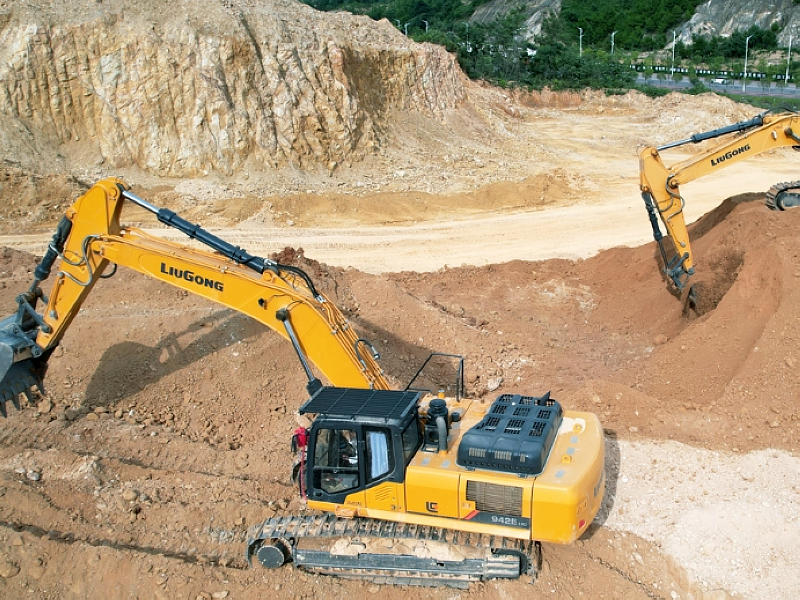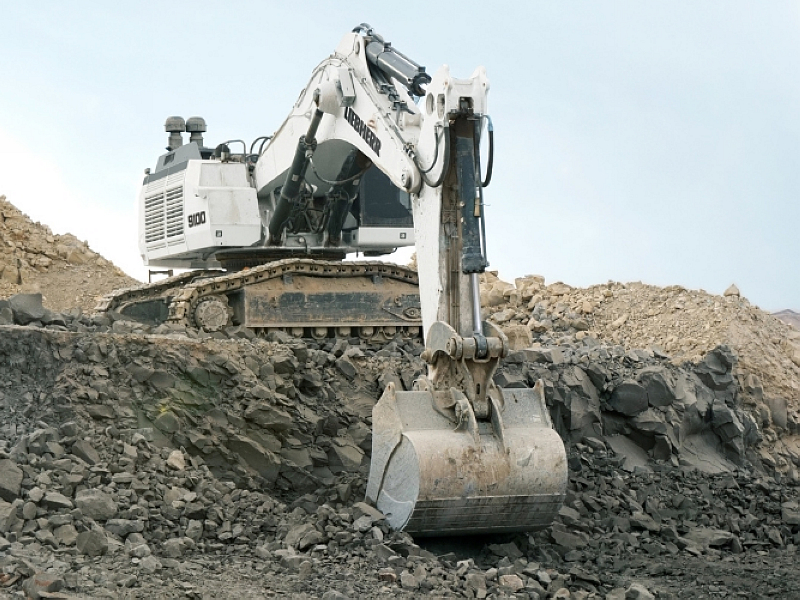June
to July every year is China's rainy season; rainfall is frequent and lasts long. At this time, the excavator operating environment is located in
mining areas, construction sites and other complex terrain area, the road is
muddy, it is very easy to cause the equipment to get into the mud, not only seriously
affect the construction progress more likely to cause equipment damage,
bringing unnecessary economic losses.

In
order to reduce the risk of “stuck in the car”, to ensure the safe operation of
the equipment, the following suggestions for the majority of machine owners and
operators to refer to:
First,
before the start of a full investigation, a scientific assessment of risk
Many
of the trapped car accidents could have been avoided. Do not take a chance on
the obviously waterlogged, serious, soft soil lots, try to avoid operation.
If conditions permit, it is recommended that the ground be drained first so
that it can dry out and harden before proceeding with construction. If the
project terrain is complicated or there is a lot of water, the use of amphibious
excavators should be considered.
When
performing high-risk tasks such as fishpond and silt work, be sure to carry
wire ropes, steel plates, and other auxiliary tools to test the softness and
hardness of the soil in the work area in advance. Available bucket to probe the
foundation, such as bucket sinking more than 3/4, indicating that the soil is
too soft, not suitable for operation; such as the whole bucket sinks, it should be immediately suspended.
Special
attention should be paid to some of the pond bottom surface layer has been dry
and cracked, but still underneath the sand layer or mud, if the situation is
not fully explored hastily work, it is very easy to get stuck in the car. In
addition, even if the bottom of the pond is solid, if the slope is soft silt, it may also be downhill in the process of trapping.
Second,
the construction process pays attention to the operating posture, maintain a
retreat path
downhill
operation must be planned in advance retreat route, to avoid blindly into a
dead end. It is recommended to go down the vertical slope and avoid traveling
on the slope. When the mini excavator goes down the rotten mud, do not put the
bulldozer in front, keep the driving wheel first, the guide wheel toward
the direction of the retreat path.
When
the equipment is stuck in soft mud, never forcefully operate the small arm in
an attempt to get out, as this is often counterproductive. You can try to
extend the small arm, with the bucket to drive the whole car forward, and the
use of dry soil paving path, 20 tons of equipment, for example, it is
recommended to pave a thickness of not less than 60 cm.
Third,
the operation of the operation should be soft, with timely recognition of danger
signs
· Operation in the silt should be soft, to prevent violent shaking caused by the equipment sinking.
· It can be dragged forward by the small arm to reduce the pressure on the ground.
· Withdraw immediately when the chain track is halfway down to avoid complete sinking due to continued operation.
· Pay close attention to the status of the track to avoid idling, causing localized soil damage and tilting of the equipment.
· Do not insert the digging bucket deeply into the high-viscosity mud layer to prevent inability to lift.
· When working on the slope of the water source, avoid the ground surface lower than the water surface, so as to avoid sinking more and more when digging.
· If the working surface encounters a slippery layer of silt (such as coal ash), the equipment should work in the right direction to facilitate timely retreat.
· If
the track is completely stuck but the car can still be rotated, you should
calmly respond and try to empty the silt under the car, and try to “drift” out
of the trap.
Fourth,
if the trapped car can not be rescued, should calmly wait for rescue
Once
it is confirmed that it can not be rescued, the operation should be stopped
immediately to prevent the equipment from further sinking, causing more serious
damage. Waiting for the rescue period, should check whether there is a risk of
water entering the equipment, in advance to do a good job of waterproofing
measures, especially in the southern region of frequent rainstorms.
During
the rescue process, you can try to remove the mud from the lower part of the
track, and if necessary, pad the steel plate, planks, and other hard
materials to enhance the adhesion of the equipment to achieve extrication. The
equipment should be thoroughly cleaned and inspected after extrication,
especially the engine compartment and cab, to ensure that no hidden danger is
left.

In
the face of complex ground conditions, it is important to fully assess the
construction conditions and equipment suitability before accepting the order.
In the course of operation, keep alert, act according to your ability, and
guard against any chance. Observe the changes on the site, anticipate the
potential risks, and make timely evacuation decisions at critical points, which
can effectively reduce the probability of getting stuck in the car and ensure
safe and efficient construction.